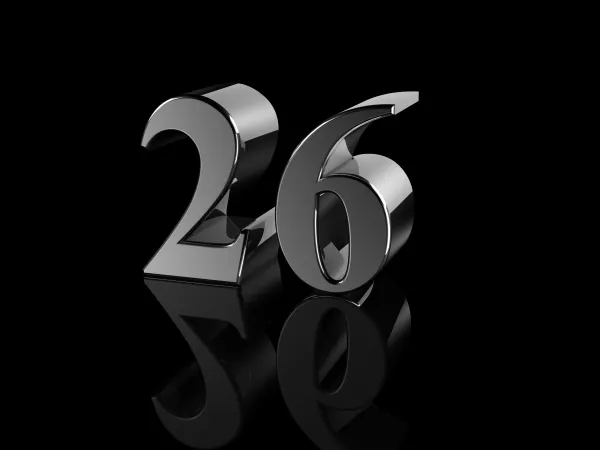Knowing When You Should -- And Shouldn't -- Attach Modifiers 26/TC Is Key to Proper Payment

Nail down when one modifier can be used alone.
If your physician provides diagnostic or radiologic services using equipment he doesn’t own, you’ll need to employ a modifier in order to be properly reimbursed and avoid over-coding the service. vDistinguishing between modifier 26 (Professional component) and modifier TC (Technical component) is the first step. Read on to ensure you know the ins and outs of both modifiers.
Put Modifier 26 and TC in Their Separate Corners
You will use modifier 26 and modifier TC to communicate to payers that your provider performed only the professional or the technical component of a service, respectively.
If your provider performed only the interpretation and report for a procedure or service, such as an x-ray, you should bill the service by attaching modifier 26 to the CPT® code. The technologist that performed the x-ray (the technical portion of the service) will usually submit the same CPT® code with modifier TC (Technical component) attached. In other words, the physician bills for his reading and reporting of the x-ray, while the facility bills for the equipment, room, film, and radiologic technician.
Example: A patient goes to a multiple specialties clinic having independent offices. The patient sees his family physician with complaints of fever, cough, and shortness of breath. The physician suspects pneumonia and sends the patient to the orthopedic office for a four-view chest x-ray. The patient brings his films back to his family physician’s office, where his physician reads them. The orthopedic office owns the x-ray equipment, not the family physician’s office. The family physician would bill 71030 (Radiologic examination, chest, complete, minimum of 4 views) with modifier 26 and the orthopedic office would bill 71030 with modifier TC, says Betty A. Hovey, CPC, CPC-H, CPB, CPMA, CPC-I, CPCD, director, ICD-10 Development and Training at the AAPC in Salt Lake City.
Tip: Technical component charges are institutional charges, made by a person or facility which actually owns the equipment, and are not billed separately by physicians.
Nail Down When Not to Use Modifiers 26/TC
Only use these two modifiers on procedures that have both a professional and technical component. Do not use modifier 26 or modifier TC on procedures that are either 100 percent technical or 100 percent professional.
“For example, 93010 (Electrocardiogram, routine ECG with at least 12 leads; interpretation and report only) is a 100 percent professional component and it would be inappropriate to use modifier 26,” explains Monica Gourley, CCS, HCS-D, clinic coder at Klickitat Valley Health Services in Goldendale, Wash.
Not only is modifier 26 not always needed, but sometimes attaching it will prevent reimbursement. “Claims submitted with modifier 26 that are billed in conjunction with the global component will not be reimbursed,” says Gourley.
Additionally: There are circumstances when a procedure may only consist of the technical component because there’s no need for an interpretation.
Pediatric scenario: The code for tympanometry — 92567 (Tympanometry [impedance testing]) — represents a technical service without a corresponding interpretive component. No interpretive component is needed because of the lack of complexity involved with the test.
Red flag: “If the same entity owns the equipment and provides the interpretation, the service is billed with no modifier, indicating the same entity provided global service,” says Dorothy D. Steed, CCS, CPC-H, CPCO, CPUM, CPUR, CPHM, CPMA, ACS-OP, CCS-P, RCC, RMC, CEMC, CPC-I, CFPC, PCS, FCS, CPAR, AHIMA approved ICD-10 trainer and ambassador, independent consultant, auditor and educator in Atlanta, Ga.
Know When to Hold Off Attaching TC
When the circumstances involve a surgery, the CPT® for the surgery is billed by the surgeon and the technical components (room, staff, equipment, monitors) are billed on UB-04s by the facility.
Update: According to Medicare Claims Processing Pub 100-04 implemented June 24, 2013, changes were made concerning the payment for TC (Technical component) services.
Payments are not made for “TC services furnished in institutional settings where the TC service is bundled into the facility payment, such as hospital inpatient and outpatient settings. Payment is made for TC services furnished in institutional settings where the TC service is not bundled into the facility payment, e.g., an ambulatory surgery center (ASC),” according to CMS. Steed adds, “Technical components are bundled with the number of units and one total charge for all services per revenue code. Generally applicable to surgical procedures and radiology, although it could apply to other procedures.” This is done by the facility. The physician would still bill his/her CPT® code represented by the documentation s/he has provided in the medical record.
Read more: You can read more about the CMS update concerning payment for TC services at www.aapc.com/codes/exclusives/transmittals/updates-to-chapter-12-and-chapter-16-of-the-medicare-claims-processing-manual-to-revise-instructions-regarding-the-technical-component-tc-of-pathology-services-furnished-to-hospital-patients.

